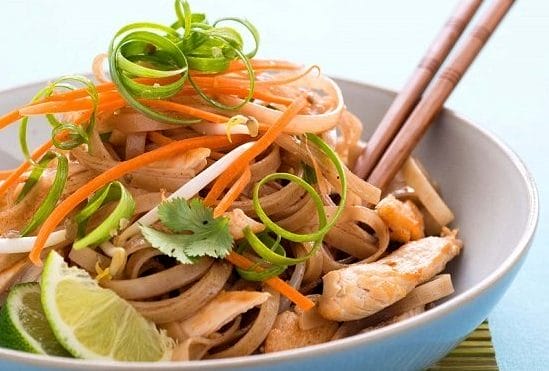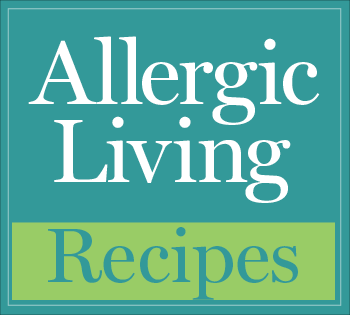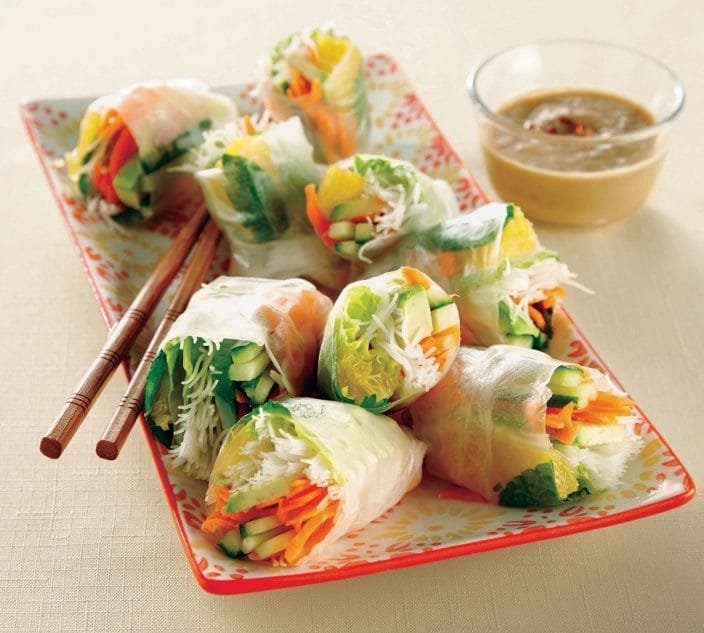Allergy-Friendly Pad Thai

Pad Thai used to be one of my favorite foods, until my allergies to fish, shellfish, and wheat blew up. In its traditional form, this is one of the world’s most allergenic foods since it contains wheat/gluten, soy, fish, shellfish, eggs and peanuts. I decided it was time to conquer this amazing dish, and make it allergy-friendly for Thai food lovers with food allergies.
This recipe serves two, which is the recommended way to make Pad Thai because cooking a larger batch will make for mushy, clumpy noodles. If you want to double the recipe, cook the sauce a bit longer than 20 minutes to reduce it, and you will need to cook the Pad Thai in two batches for best results.
Makes: 2 servings
Free of: gluten and top allergens
Ingredients
Sauce
- 1/2 cup (120 mL) beef broth (use allergy-friendly brand, such as Kitchen Basics)
- 1/2 cup (120 mL) low-sodium chicken broth (allergy-friendly brand)
- 1 clove garlic, thinly sliced
- 1/4 tsp Chinese five-spice powder (e.g. Spicely Organics brand)
- 1/4 tsp salt
- 1/2 tsp freshly squeezed lime juice
- 1 tbsp tamarind paste
- 3 tbsp palm or brown sugar
- 1/2 tsp Sriracha hot sauce [optional]
Pad Thai
- 4 oz (113 g) rice stick (Pad Thai) noodles
- 2 tbsp canola oil
- 8 oz (230 mL) chicken breast, or pork, or beef, sliced into 1/4-inch thick strips, seasoned with a little salt
- 1 cup (250 mL) chopped green onion (use white and green parts), divided
- 3 cloves (1 tbsp) finely minced garlic
- 1 1/3 cups (320 mL) bean sprouts, divided
- 1/2 cup (120 mL) roasted sunflower seeds*, chopped, divided
- 1/4 cup (60 mL) chopped cilantro
- 1/2 cup (120 mL) carrots, shredded or cut into matchsticks
- lime wedges
Recipe Tips
*For sunflower seeds without nut or peanut may contain warnings, try Sunbutter Sunflower Seed Kernels.
Pad Thai Tips
While making your sauce, prep all your other ingredients, except the noodles.
Read the recipe through before making it, so you’re ready to add ingredients to the wok quickly.
“Chopping” sunflower seeds: Put the seeds in a ziplock bag and bang a few times with a rolling pin or a mallet. This is far easier than attempting to chop these seeds.
To mix evenly and cook through, use two large spatulas or spoons to toss the Pad Thai as you’re cooking it.
Instructions
- For the sauce, combine beef broth, chicken broth, garlic and Chinese five-spice powder in a small saucepan over medium heat. Bring to a boil. Now add salt, lemon juice and lime juice, reduce heat to medium-low and simmer uncovered 20 minutes until reduced to 1/4 cup. Strain broth through a strainer or fine sieve, using the back of a spoon to push garlic juices through.
- Return to the pot, add tamarind paste, palm sugar and Sriracha (if using). Stir over low heat, until the sugar is dissolved. Remove from heat and set aside.
- Put noodles in a large bowl. Pour boiling water over noodles to cover completely. Use tongs to stir noodles a couple times. Let soak 4 minutes. Drain, and rinse with cool water. Set aside.
- Heat a non-stick or well-seasoned wok over high heat, add 1 tablespoon of the canola oil and heat until almost smoking, swirl around wok, then add the chicken. Cook, stirring often, about 3 minutes, until golden brown. Transfer to a bowl and set aside.
- Add the remaining tablespoon of canola oil to the wok. Add 1/2 cup of the green onions and the garlic to the wok, and cook stirring about 10-15 seconds. Do not burn the garlic.
- Add other ingredients in the following order, and toss after each addition: noodles, 3 tablespoons of your sauce, chicken, 1 cup of the bean sprouts, and 1/4 cup of the sunflower seeds. Season with a little salt. Toss everything until heated through but no longer than 1-2 minutes. Using two utensils will make tossing a lot easier!
- Transfer to a serving platter and serve garnished with the remaining 1/2 cup of green onions, cilantro, the remaining 1/3 cup of bean sprouts, the carrots, the remaining 1/4 cup of sunflower seeds, and a few lime wedges.
Sign up for Allergic Living's free newsletter for more great allergy-friendly and gluten-free recipes, plus the latest food allergy research and news.





